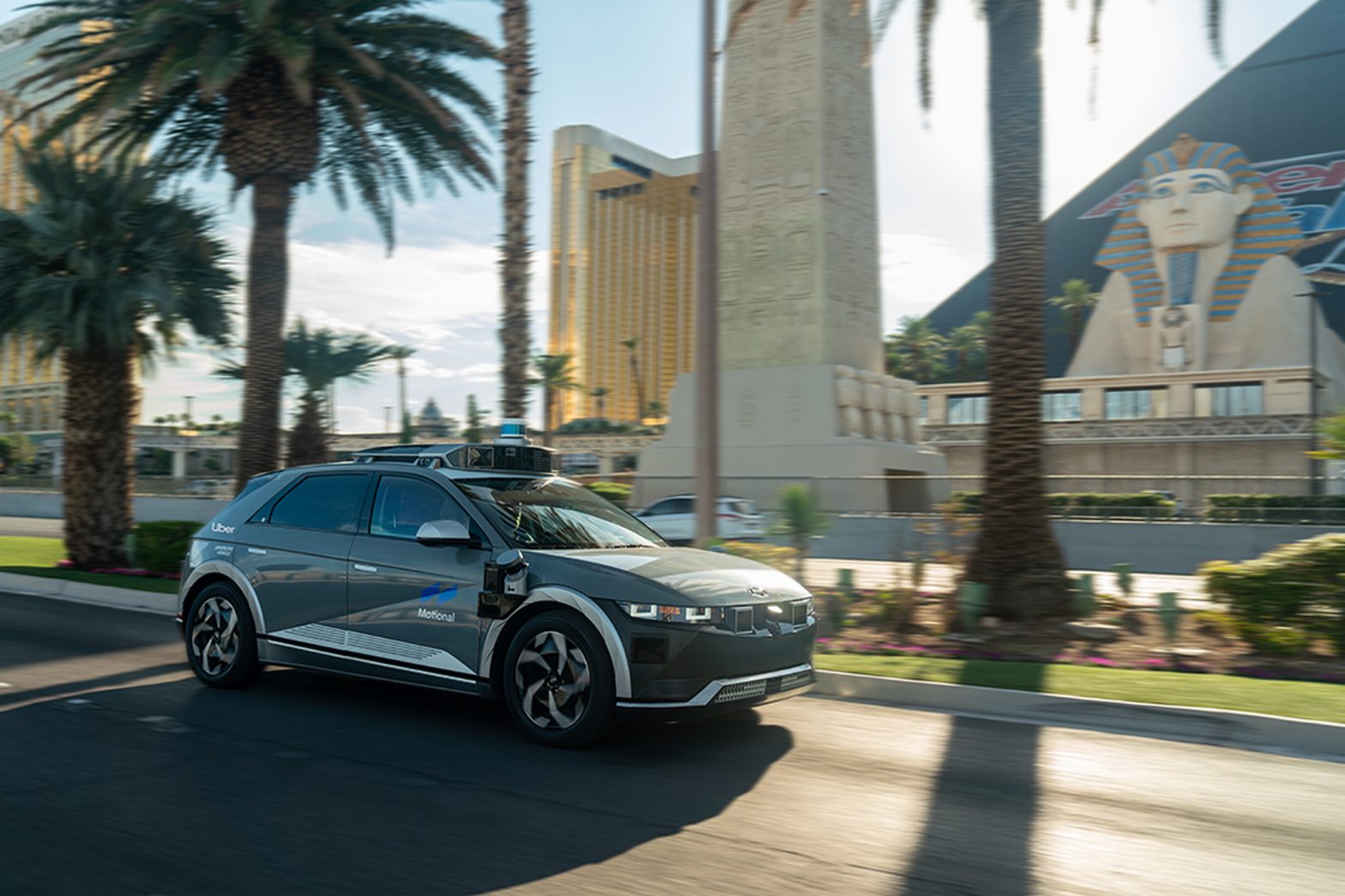/
For the first time, the Uber app can be used to hail an autonomous vehicle. The ridehail company has a 10-year deal with Motional, which is a joint venture between Hyundai and Aptiv.
:format(webp)/cdn.vox-cdn.com/uploads/chorus_asset/file/24269481/Uber_Motional_Still.png)
Uber now has robotaxis available for its customers to hail in Las Vegas.
The vehicles are operated by Motional, a joint venture between Hyundai and Aptiv, and will feature safety drivers behind the steering wheel, though the vehicles will be operated by Motional’s autonomous driving system. Motional says it intends on launching a public fully driverless service without safety drivers in 2023.
It’s the first time that autonomous vehicles have been made available to customers on Uber’s app. The company signed a 10-year deal with Motional to deploy AVs on its ride-hailing and delivery platforms earlier this year.
The deal isn’t exclusive: Motional also operates an autonomous taxi service in Las Vegas with Uber’s main competitor Lyft, while Uber has a 10-year deal with Nuro to use the company’s driverless delivery pods in California and Texas. (Uber also has a delivery pilot underway with Motional in Santa Monica.)
Motional’s AVs will be available to reserve on the Uber app under Uber X or Uber Comfort Electric, the company’s most popular service and its EV-only service, respectively. Comfort Electric is an extension of Uber Comfort in which riders pay around 20 to 40 percent more than a typical Uber X trip.
Motional says its next market for both ride-hailing customers will be Los Angeles. California requires AV companies to obtain a series of permits from the state’s Department of Motor Vehicles and Public Utilities Commission before they are legally approved to ferry passengers, accept money for trips, and operate fully driverless cars as part of a commercial service. The company has applied for the first of these permits with the California DMV but has yet to receive approval.
Infamously, Uber had developed its own fleet of autonomous vehicles with the intention to eventually replace all of its human drivers, but the program was shut down after a woman was killed by one of the company’s vehicles in 2017.
